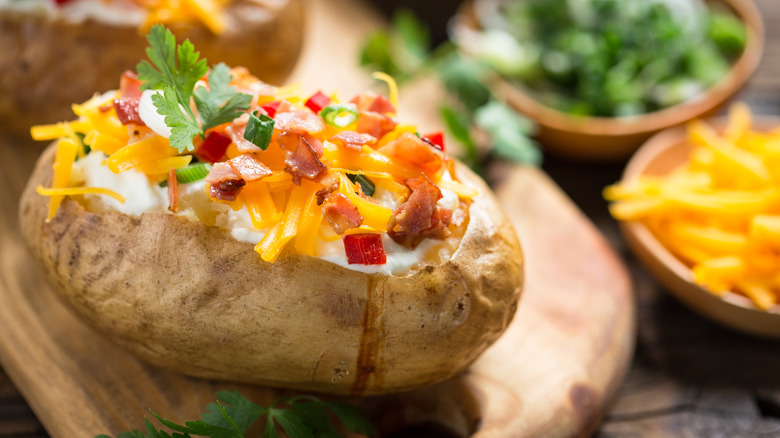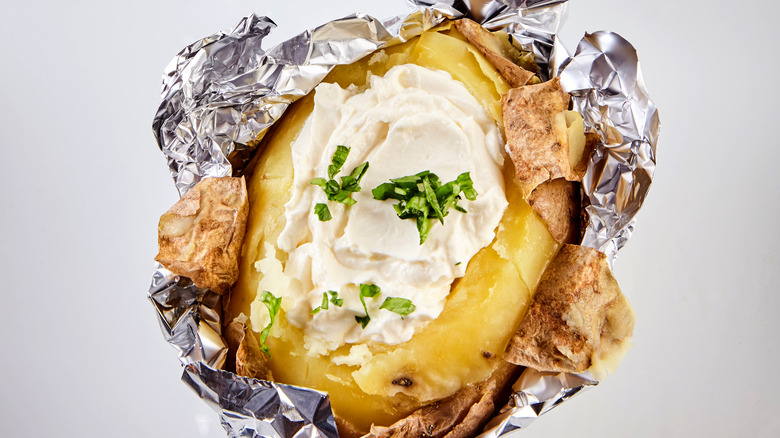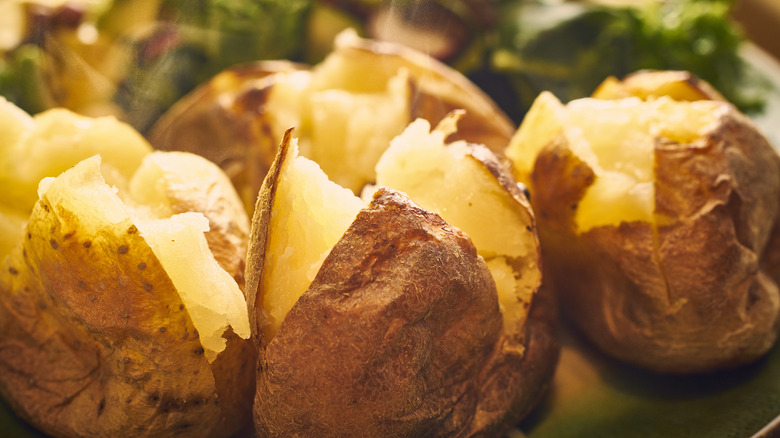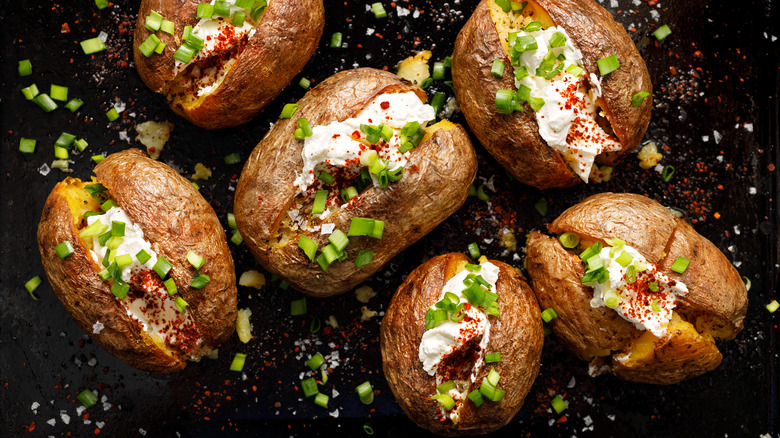Why You Should Never Bake A Potato In Aluminum Foil
Who doesn't love a baked potato? It's an absolute classic, a dinnertime staple for years, and it's a perfect starch that goes great with all kinds of different fats — like a plop of salty butter or a spoonful of sour cream.
Now, you'd think that a dish called a "baked potato" would be dead simple to prepare — after all, the cooking method is in the name, right? How can you screw that up? Well, as it turns out, plenty of people actually do make unexpected mistakes when inserting potatoes into the oven for baking. One such mistake is choosing the wrong potato for the job, which can result in a baked potato that's mushy and unappealing. But that's not the only error home cooks make while preparing this classic side dish...
While popular, using aluminum foil may be a big mistake
Unfortunately for those of us who may have been relying on this trick in the past, baking potatoes wrapped in tin foil is another serious potato-baking error. A lot of recipes advise wrapping a potato in tin foil before transferring it to the oven to bake, suggesting that this method results in a moister, steamier baked potato.
But that's exactly the trouble, according to the group of potato experts at the Idaho Potato Commission, who weigh in on pressing potato topics ranging from why potatoes can be green to whether it's safe to cook with sprouted spuds.
Foil-wrapped potatoes steam in the oven as opposed to baking
Wrapping a potato in foil before baking it traps in too much moisture, causing the potato to steam, not bake, resulting in a soggy spud — not one with the light, fluffy texture that's often considered the hallmark of a great baked potato (via Idaho Potato Commission). Worst of all, the potato won't develop the crispy outer skin that spud eaters love to crunch into as they enjoy their baked potato. And while proponents of foil-wrapping often suggest that this method helps cut down on the potatoes' baking time, the Idaho Potato Commission dispels that myth, writing, "on the contrary, since the foil itself has to be heated before the potato begins to bake, cooking times increase slightly."
So now that you know that wrapping potatoes in foil before baking won't result in a tastier or quicker-cooking spud, what's the best way to prepare this classic side dish? The Idaho Potato Commission suggests taking a minimalist approach.
Take a cue from potato-lovers across the pond
According to the Idaho Potato Commission, it's best to bake naked potatoes in a 425 degree F oven for 55 to 60 minutes until the potatoes reach an internal temperature of 210 degrees F. At that temperature, the skin should be nice and crisp, while the inside will be fluffy and tender.
The cooking technique described above is the one most common in England, where so-called "jacket potatoes" are widely beloved. These crispy-on-the-outside, fluffy-on-the-inside taters are a standard pub food that are enjoyed with a wide array of toppings, ranging from grated cheddar cheese to baked beans to coleslaw (via Cup of Jo). So great is their love for crispy, dry baked potatoes that Brits will even go so far as to bake their unwrapped, un-oiled potatoes right on the oven rack for two hours, cut them open to release even more steam and moisture, and place them back into the oven for an additional 10 minutes.
If you're simply keeping potatoes warm after baking them, the Idaho Potato Commission states that it's ok to wrap the potatoes in foil post-baking. If transferred to a warming drawer or heat-proof cabinet, the taters should stay hot for up to 45 minutes as you focus on getting the rest of your meal on the table.
So the next time that this classic side dish is on your list, leave the foil just where it belongs — in your kitchen cabinet.



